All About eCommerce Packaging You Ever Wanted To Know!
With the upsurge of digitalization. There is an evident growth in the e-commerce industry. People now prefer to shop online for anything and everything they want. Thus, there are so many e-commerce portals which are one stop shop for all such requirements like amazon.in, Flipkart, Voonik and much more. All these eCommerce portals are brands hence, they use their own branded packaging material to fulfil all their orders. They advise and some have made it mandatory to use branded packaging material only to fulfil all the orders.
When such biggies made it mandatory to use branded packaging material which is designed and manufactured in such a way that they are apt for all sellers to pack any sort of product they are selling. According to a survey made by Dotcom enterprise, it was evident that using proper and branded packaging will help sellers grow the number of orders, less of returns and importantly happy customers.
With so much of importance to the packaging material, let’s see what packaging materials are required and how they should be used.
The first and foremost step to head towards packaging your product always check the nature of your product. Product categorization is the most important step towards the packaging material required for its packaging.
Let’s consider how to categorize the products. Primarily products are classified if they dangerous goods or non-dangerous goods.
What are dangerous goods?
Those products/goods that are materials or items with hazardous properties which, if not properly controlled, present a potential hazard to human health and safety, infrastructure and/ or their means of transport. Miscellaneous Dangerous Goods like sharp & pointed tools, toxics, chemicals, ink cartridges and other liquid or semi-liquid products.
Dangerous goods are further classified into Rigid and Flexible. Where rigid goods contain Metals, glass and plastics and flexible includes laminates and paper.
What are non-dangerous goods?
Those products/goods that are materials or items which are not containing any hazardous properties. Do not have a potential hazard to human health and safety, infrastructure and/ or their means of transport. Non-dangerous goods are books, glass wares, garments, toys and more.
Non-dangerous goods are further classified into Fragile, Semi-fragile and Non-fragile goods.
So, the product complete Product Categorization looks like:
Looking at the above chart, it’s very much required to first dwell into the packaging of a dangerous type of goods.
Packaging of Metals Products
(Example of metal products are metal cans, knives, electronic sharp items.)
Step 1: Wrap the product in multiple layers of Bubble Wrap. In case of multiple products wrap each of the products with layers of bubble wrap and bundle all the products together with stretch film.
Step 2: Place the product inside the carton box.
Step 3: Close the flaps by application of BOPP tape.
Step 4: Paste the shipping label on the carton.
Step 5: Put the invoice in the poly pouch and paste it on the carton.
Step 6: Wrap the box with stretch film to keep it safe from climatic changes or place in it tamper proof courier bags to provide safety from climatic variations and theft.
Packaging type: E-Commerce Packaging, Electronics Packaging, Stationery Packaging, Industrial Packaging.
Packaging of Plastic Products
(Example of plastic products are plastic bottles, toys etc.)
Step 1: Wrap the product in 2 layers of Bubble Wrap or use bubble courier bags.
Step 2: Place the product inside the carton and boxes.
Step 3: Close the flaps by the application of BOPP tape.
Step 4: Paste the shipping label on the carton
Step 5: Put the invoice in the poly pouch.
Step 6: Wrap the box with stretch film to keep it safe from climatic changes or place in it tamper proof courier bags to provide safety from climatic variations and theft.
Packaging type: E-Commerce Packaging, Stationery Packaging, Industrial Packaging, Education Packaging.
Packaging of Glass Products
(Example of glass products are bottles, crockery etc.)
Step 1: Wrap the product in multiple layers of Bubble Wrap. In case of multiple products wrap each of the products in multiple layers of bubble wrap or use bubble courier bags.
Step 2: Place the product inside the carton and close the flaps by application of Fragile tape.
Step 3: Paste the shipping label on the carton
Step 4: Put the invoice in the poly pouch.
Step 5: Wrap the box with stretch film to keep it safe from climatic changes or place in it tamper proof courier bags to provide safety from climatic variations and theft.
Packaging type: E-Commerce Packaging, Stationery Packaging, Industrial Packaging.
Packing of Laminates/Pouches
(Example of Laminates/Pouches products are spout pouches, ketchup pouches, liquid pouches etc.)
Step 1: For Liquid Products, firstly Place the pouch in a poly pouch (tamper proof bags) and seal it and wrap 2 layers of bubble wrap or use bubble courier bags.
Step 2: For Solid Products, wrap 2 layers of bubble wrap. For Multiple products wrap each of the products in bubble wrap.
Step 3: Place the wrapped product in a suitable box.
Step 4: Seal the carton with BOPP Adhesive tape.
Step 5: Paste the Shipping label on the box.
Step 6: Put the invoice in the poly pouch and paste it on the carton.
Step 7: Wrap the box with stretch film to keep it safe from climatic changes or place in it tamper proof courier bags to provide safety from climatic variations and theft.
Packaging type: E-Commerce Packaging, Stationery Packaging, Healthcare Packaging, Pharmaceutical Packaging.
Packing of Paper Board Box/Cartons
(Example of Board box/Cartons products are cardboard boxes, etc.)
Step 1: Place the Paper Board Box/Carton in a suitable box without bubble wrap.
Step 2: Seal the carton with adhesive tape.
Step 3: Paste the Shipping label on the box.
Step 4: Put the invoice in the poly pouch.
Step 5: Wrap the box with stretch film to keep it safe from climatic changes or place in it tamper proof courier bags to provide safety from climatic variations and theft.
Packaging type: E-Commerce Packaging, Stationery Packaging, Education Packaging.
Furthermore, let’s dwell into Non-dangerous goods packaging.
Packaging of Fragile Items
(Example of fragile products are glass wares, vase etc.)
Step 1: Wrap the product with multiple layers of bubble wrap and secure it with tape or use bubble courier bags.
Step 2: Form the box using adhesive tape.
Step 3: Place the wrapped product in a suitable box.
Step 4: Seal the carton with adhesive Fragile tape.
Step 5: Paste the Shipping label on the box.
Step 6: Put the invoice in the poly pouch.
Step 7: Wrap the box with stretch film to keep it safe from climatic changes or place in it tamper proof courier bags to provide safety from climatic variations and theft.
Packaging type: E-Commerce Packaging, Electronics Packaging, Stationery Packaging, Industrial Packaging.
Packaging of Semi-Fragile Items
Step 1: Wrap the product in 2 layers of Bubble Wrap or use bubble courier bags.
Step 2: Place the product inside the carton and close the flaps by the application of adhesive tape.
Step 3: Paste the shipping label on the carton
Step 4: Put the invoice in the poly pouch and paste it on the carton.
Step 5: Wrap the box with stretch film to keep it safe from climatic changes or place in it tamper proof courier bags to provide safety from climatic variations and theft.
Packaging type: E-Commerce Packaging, Stationery Packaging, Industrial Packaging, Education Packaging.
Packaging of Non-Fragile Items
Step 1: Choose a Security bag or Carton basis the product to pack the product.
Step 2: Place the product inside the carton/security bag.
Step 3: For cartons close the flap by the application of tape and paste the shipping label and invoice.
Step 4: For Security bags, close the mouth by sealing the adhesive liner provided.
Step 5: Place the invoice in the jacket and seal it using an adhesive tape.
Step 6: Wrap the box with stretch film to keep it safe from climatic changes or place in it tamper proof courier bags to provide safety from climatic variations and theft.
Packaging type: E-Commerce Packaging, Stationery Packaging, Education Packaging, Textile Packaging, Industrial Packaging, Retail Packaging.
Key Points to be noted:
- In case of multiple products bubble wrap each of the individual items. In case of Glass bottles and other fragile items, multiple layers of bubble wrap are mandatory. Use stretch film to bundle all the products together.
- The packing carton used should be of similar in size or 1 to 1.5 inches larger than of the product.
- There should be no free space inside the carton thus allowing no rattling. In case of free space, extra layers of bubble wrap should be used.
- There should be a neat application of tapes on the cartons.
- The shipping label and invoice should not be damaged in any case, the contents should be clear and readable and Barcode should be able to scan easily.
As you have just been acknowledged the amount of technicality required for perfect packaging, it is very much required to use premium quality packaging material. The highly-used packaging materials are Tamper proof courier bags, courier bags with bubble wrap, adhesive tapes, stretch film, bubble wrap/rolls, boxes and packing list envelopes.
For online sellers who sell their products on various eCommerce portals must use respective eCommerce branded packaging material. For individual sellers who have their own company and the online/offline store can use plain packaging material.
To keep your customers happy with your products and services, it is very much useful to use customised packaging material with their own brand name and company details printed on the packaging material used. As per a survey, branded packaging material increases brand awareness, as well as such innovative customised packaging, will make your customers share on social media platforms as well as provides references to friends and family about your products and services.
Get all types of packaging materials under one store and enjoy the selling saga.

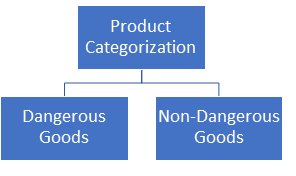
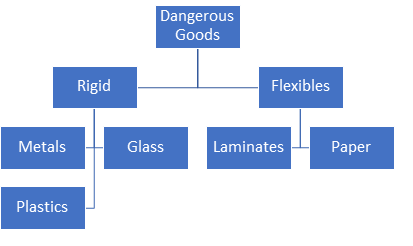
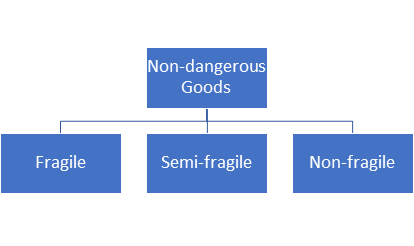


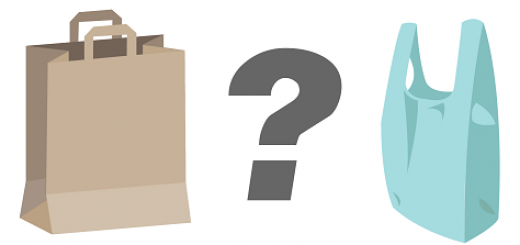
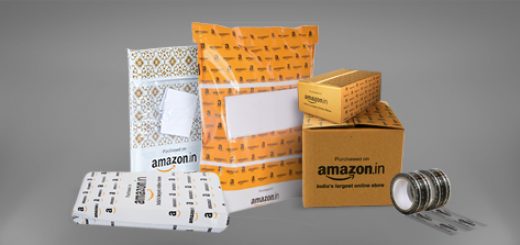
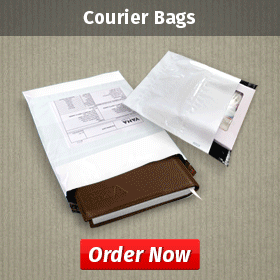
Recent Comments